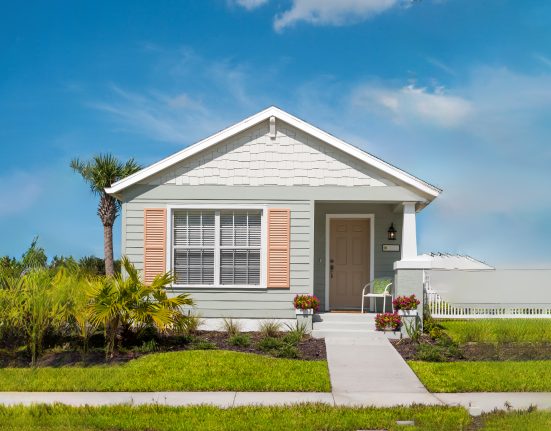By Stephen Johnson, Economics Reporter For Daily Mail Australia
03:30 09 Apr 2024, updated 05:18 09 Apr 2024
Australians are more likely to be suffering mortgage stress than almost any other people in the world because very few borrowers here are on a fixed interest rate, a new IMF report says.
On a global scale, Australia has some of the lowest take-up of fixed rate mortgages in the world, says the International Monetary Fund.
The global finance body has also raised concerns about Australians having some of the world’s highest household debt levels and an undersupply of housing leading to an affordability and rental crisis.
Australia ranked third last on an IMF league table of 22 nations for the proportion of borrowers on a fixed rate, behind only Chile and South Africa.
Borrowers hit harder in Australia
With only 1.4 per cent of Australian borrowers now on a fixed rate, that means 98.6 per cent of monthly mortgage repayments automatically go up when the Reserve Bank of Australia raises interest rates.
This has led to higher rates of mortgage stress – defined as borrowers having ot spend more than 30 per cent of their pre-tax income on home loan repayments.
Monthly mortgage repayments in Australia have surged by 67.7 per cent since mid-2022.
‘Our results indicate that monetary policy has greater effects on activity in countries where the share of fixed-rate mortgages is low,’ the IMF said.
‘This is due to homeowners seeing their monthly payments rise with monetary policy rates if their mortgage rates adjust.
‘By contrast, households with fixed-rate mortgages will not see any immediate difference in their monthly payments when policy rates change.’
In February, just 1.4 per cent of borrowers by value had a fixed rate compared with 98.6 per cent on a variable rate, new Australian Bureau of Statistics lending data revealed.
But in October 2021, 43.6 per cent of borrowers were on a fixed rate compared with 56.4 per cent on a variable rate, back when RBA interest rates were at a record-low of 0.1 per cent and banks were offering variable rates starting with a ‘two’.
Even in mid-2022, when interest rates were still at record lows, Australia had a much lower share of fixed-rate mortgages compared with the global average, with less than one in five locking in a rate for several years.
Since May 2022, the Reserve Bank has raised interest rates 13 times, with the most aggressive rate rises in a generation taking the cash rate to a 12-year high of 4.35 per cent.
A borrower with an average $598,624 mortgage has seen their monthly variable rate repayments climb from $2,301 to $3,858, translating into a 67.7 per cent increase.
Borrowers with a 20 per cent mortgage deposit are paying $18,696 more a year in repayments as a variable rate at Commonwealth Bank – Australia’s biggest mortgage lender – climbed to 6.69 per cent, up from 2.29 per cent.
ME Bank offers Australia’s cheapest fixed rate of 5.79 per cent for two years, but the major banks all have variable or fixed rates starting with a ‘six’.
Unaffordable housing
Despite the higher rates, Sydney house prices have surged by 25 per cent since the pandemic, but in Brisbane, Perth and Adelaide they have soared by more than 55 per cent, CoreLogic data showed.
Australia now has a rental vacancy rate of just one per cent.
‘During the pandemic and associated lockdowns, the combination of low rates and structural changes led to rapid growth in house prices globally, adding to already-elevated pre-pandemic levels in some countries,’ the IMF said.
‘House prices often grew faster than income, lowering affordability and driving potential buyers to rent instead.
‘This, combined with falling new construction, boosted rents in many countries.’
Higher debt levels
The IMF also noted Australia also had an undersupply of housing and higher debt levels as result of less restrictive loan-to-value (LTV) ratios, where a loan can fund a higher proportion of the property purchase.
‘Countries such as Australia and Japan appear to have stronger housing channels of monetary policy transmission, with low shares of fixed-rate mortgages, less-restrictive LTV limits, high household debt (only to some extent Japan), and a somewhat elevated proportion of the population living in housing-supply-restricted areas,’ the IMF said.
But unlike Japan, Australia has record-high immigration and the fastest population growth since the early 1950s.
That means available housing in Australia is in short supply and diminishing further as each week passes, leading to increasingly unaffordable prices and soaring debt which will financially weigh down home buyers for decades.
The IMF noted Australia had some of the highest debt levels in the world.
‘Similarly, household debt is below 50 percent of GDP in some (for example, Chile, Colombia, and Israel) and exceeds 100 percent of GDP in others (Australia, Canada, and Norway),’ it said.
Australia’s household debt to income ratio of 211 per cent is the third highest in the world after Norway’s 247 per cent and Switzerland’s 222 per cent.
Consumers gloomy
The housing crisis and unabated inflation has most pessimistic about the future.
The Westpac-Melbourne Institute consumer sentiment index for April showed those worried about the future economy vastly outnumbered optimists when it came to the economy.
That monthly index fell by another 2.4 per cent this month to 82.4 points, putting it well below the 100 mark at which optimists and pessimists were even.
Westpac senior economist Matthew Hassan spelt out just how grim the situation is.
‘The pessimism that has dominated the consumer mood for nearly two years now is still showing few signs of lifting,’ Mr Hassan said.
‘Indeed, outside of the deep recession of the early 1990s, this is easily the second most protracted period of deep consumer pessimism since we began surveying in the mid-1970s, with all other sentiment slumps lasting nine months or less.
‘The April sentiment update suggests consumers continue to expect progress on inflation and associated cost-of-living pressures to be slow.’







